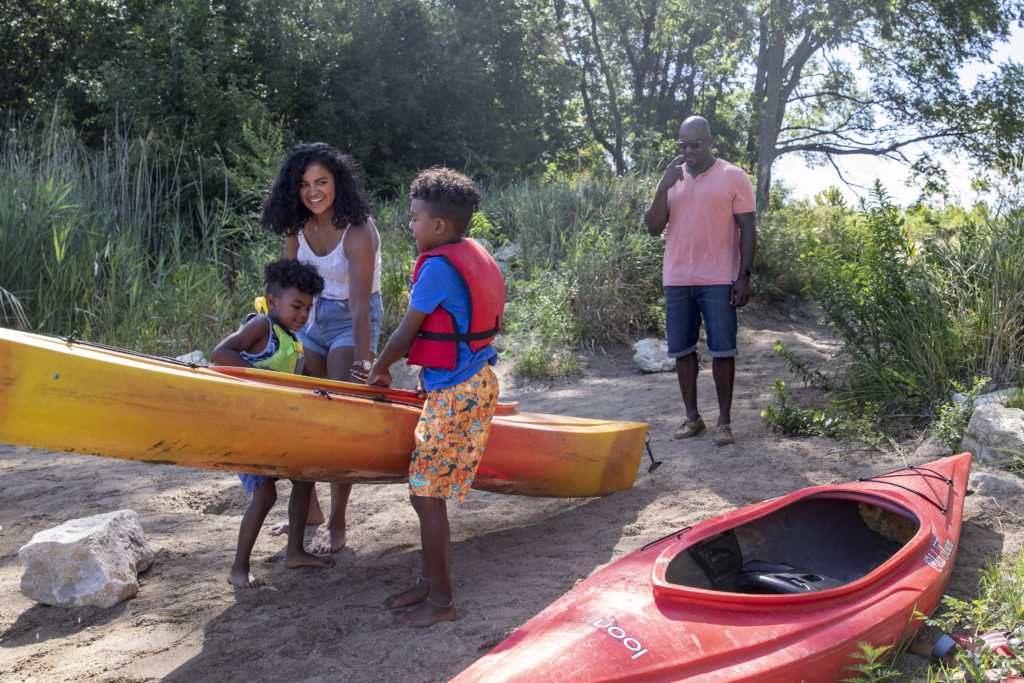
Iowa Department of Natural Resources’ Paddling Safety Tips
- Wear a properly fitted lifejacket while on the water. Never paddle under the influence of alcohol.
- Paddle with a group, not by yourself. Leave a “float plan” for your trip with a friend or relative.
- Dress appropriately for weather and water conditions, including air and water temperature. Avoid conditions for which you are not prepared.
- Learn about and study your route in advance, especially hazards that are beyond your skill level.
- Carry a supply of food and drinking water adequate for your trip’s length.
- Be able to read the water and effectively steer and propel your boat. Learn how to rescue yourself and others in the event of a capsize.
- Do not stand up in your boat, and avoid weight shifts that may cause capsize. Do not carry more weight or persons than your boat is designed to safely accommodate.
- Know where the dams are!
- Know and understand your river levels and flows, as well as the weather forecast. Remember, rain that has fallen upstream will be coming downstream!
- Watch out for newer paddlers. Offer advice, be supportive, share your knowledge, and make them feel welcome.
American Canoe Association’s Kayaking Safety Essentials
- Wear a life jacket.
- Be a competent swimmer.
- Take a class / obtain the knowledge.
- Boating alone is discouraged.
- Know how to self-rescue.
- File a float plan.
- Have the proper equipment.
- Match your abilities to the venue.
- Practice “leave no trace outdoor” ethics.
- Paddle safe, paddle smart, and know your limits.
U.S. Centers for Disease Control’s How to Safely Visit Rivers
Know before you go
- Before you head out, check online to find out if the swim area is currently monitored, is under advisory, or has been closed for health or safety reasons. This is especially important after a heavy rain.
- If your body’s ability to fight germs is already affected by other health problems or medicines, check with your healthcare provider before swimming in oceans, lakes, rivers, and other natural bodies of water.
Avoid Recreating
- If signs say the area is closed. This may be due to high levels of germs in the water which make it unsafe for swimming.
- If the water looks cloudier than usual, is discolored, or smells bad. Cloudy water can be a warning that there are more germs in the water than normal. Discolored or smelly water could mean there is a harmful algal bloom (HAB) in the water.
- If you see any pipes draining into or around the water.
- If you are sick with diarrhea.
When Recreating
- Don’t swallow the water.
- Keep sand away from your mouth and children’s mouths.
- Wash your hands for 20 seconds before eating food, especially if you have been playing in or touching sand.
If soap and water are not available, use an alcohol-based hand sanitizer that contains at least 60% alcohol. Hand sanitizer might not be as effective when hands are visibly dirty or greasy, so wiping sand off before using it might be helpful.